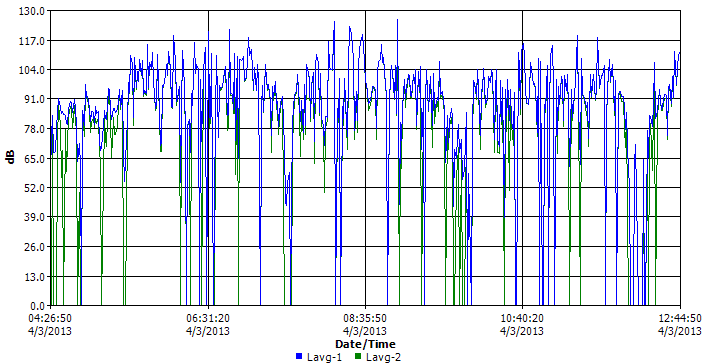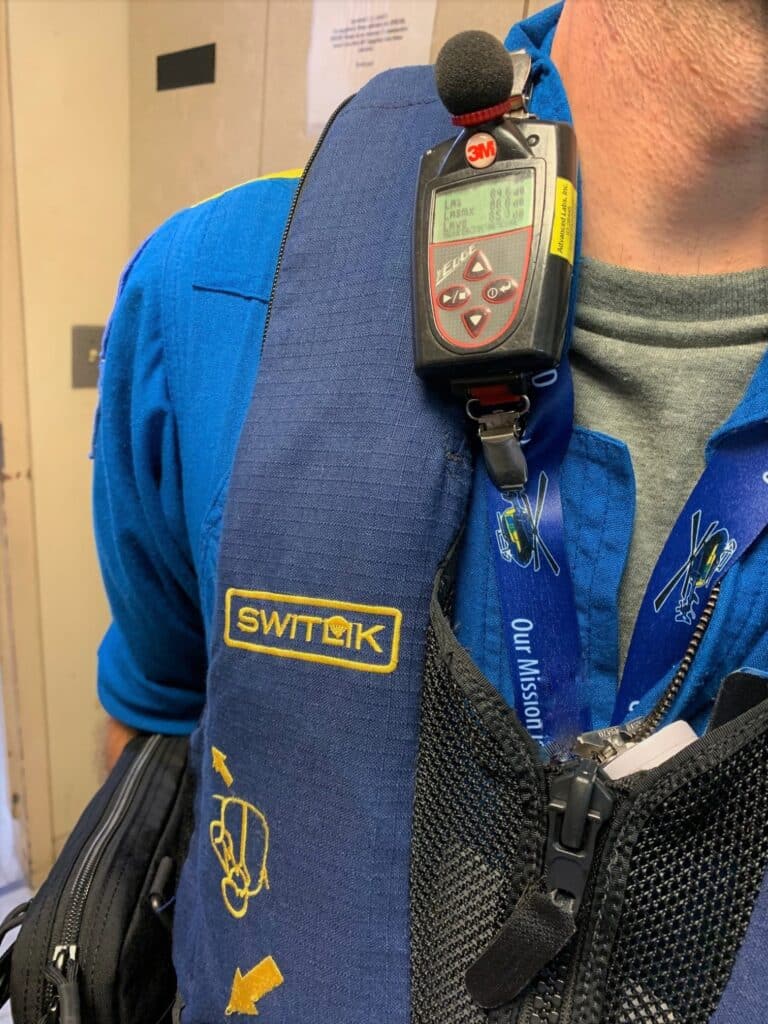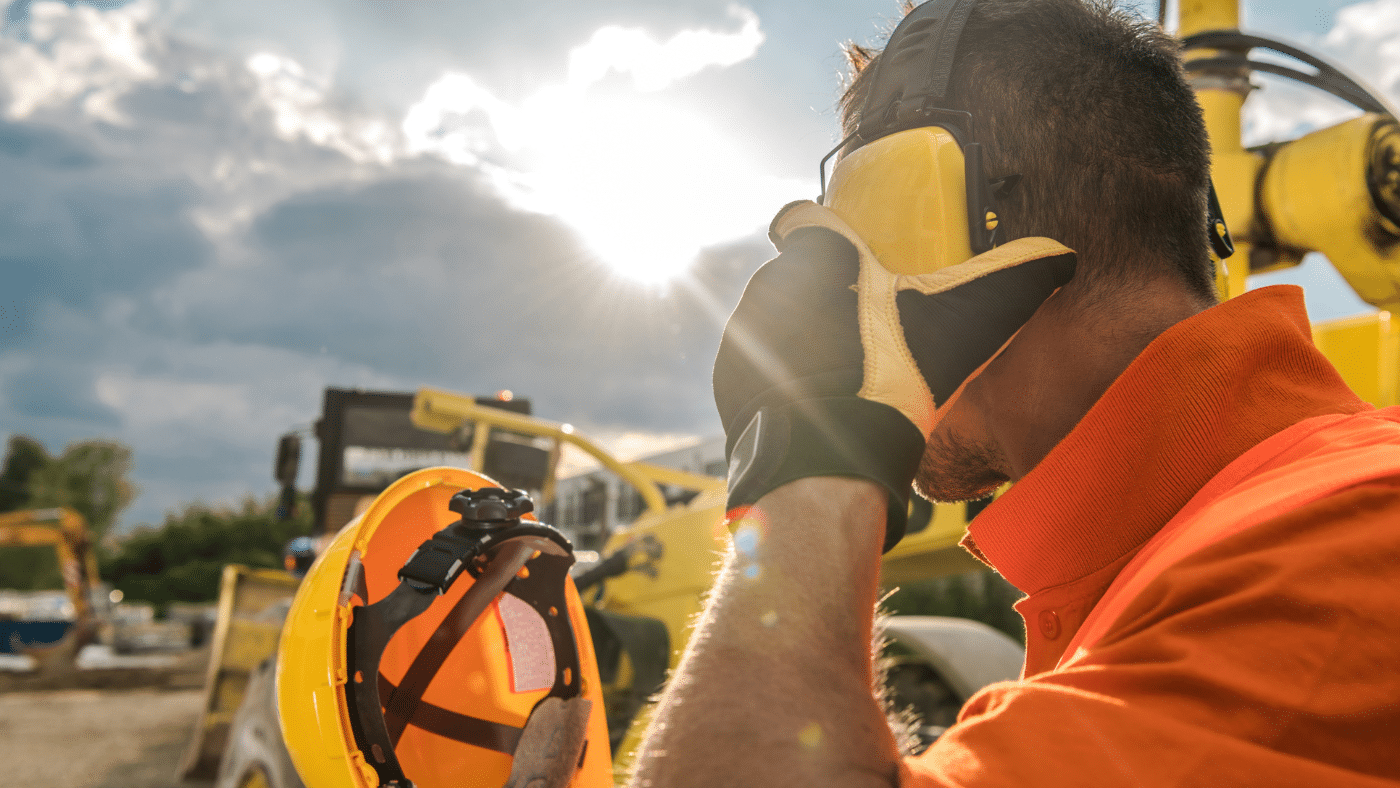What’s That Sound
Close your eyes. Go ahead, humor me, by actually closing your eyes and then LISTEN. What do you hear?
Science of Sound
Sounds are important to us. They can be a source of calm and relaxation, of anxiety, or of warning. When sound becomes loud and harmful, it becomes an unwanted sound, AKA Noise. In this discussion, we will focus on occupational noise; however, we urge you to consider social noise (i.e., concerts, bars, sporting events) and environmental noise (i.e., traffic, industrial) as contributing factors to your overall health. According to the National Institute of Occupational Safety and Health (NIOSH), 5 to 30 million workers are exposed to hazardous noise during work at or above the recommended exposure limit. In order to reduce the number of people affected by hazardous noise we need to emphasize the importance of hearing conservation.
To understand noise and hearing loss, it is important to understand the human ear. Britannica defines the human ear as an organ that serves two main functions: Our ears detect and analyze sound and maintain equilibrium (or balance). In an occupational health sense, the focus is on the function of the ear that converts sound waves that hit our outer ear into electrical impulses that impact the ear drum. These vibrations are then transmitted to three of our smallest bones located in the middle ear called the malleus (or hammer), the incus (or anvil), and the stapes (or stirrup). These bones amplify the vibrations and transmit them to the inner ear. The inner ear contains the cochlea, a snail-like structure filled with fluid. This may be the most sensitive part of the ear where fine hairs (cilia) within the cochlea move the vibrations. The cilia are specialized nerve endings that convert the vibrations into nerve impulses which is interpreted by our brain and results in the sound we hear. Exposure to loud noise can destroy these fine hairs and cause hearing loss!
Noise-induced hearing loss (NIHL) is damage to the cilia in the cochlea. More exposure results in more dead nerve endings. The result is permanent hearing loss that cannot be corrected through surgery or with medicine. Noise-induced hearing loss limits your ability to hear high frequency sounds and understand speech, which seriously impairs your ability to communicate. To test your ability to hear the different frequencies check out this video 20Hz to 20kHz (Human Audio Spectrum) – YouTube that goes from 20 to 20,000 Hertz (Hz). The range of speech is considered to be in the range of 500 Hz to 4,000 Hz.
Noise Exposure and Assessment
As with all other occupational safety and health (OSH) topics, it is important to anticipate and recognize noise hazards in our everyday lives. Workers and OHS professionals should anticipate where noise is present, including areas where the noise is continuous or intermittent. Random alarms, malfunctioning equipment and several other sources of noise that occur simultaneously can make it difficult to anticipate a noise hazard. Noise hazards are usually recognizable, however, in some cases they may not be. Signs that a workplace may produce hazardous noise includes workers having to raise their voices, complaints of ringing in the ears and hearing impairment after work hours, and a variety of sounds from equipment or the facility (traffic, jackhammer, crowds).
The next step is to evaluate the noise hazard, which is simple because the science behind noise is well defined. Sound level meters and dosimeters have the ability to precisely measure sound peaks, and many will calculate exposure averaged over time with little mathematical effort. Sound level meters are used to determine the origin and source of the noise. The meter should be moved within the hearing zone – basically at an arm’s length circumference (or sphere) around your body. A sound level meter can be used to create a noise map of the area to identify the locations where hearing protection is required or recommended. Personal noise dosimeters are typically worn on the collar and record the intensity of noise (decibel) throughout a period of time to provide a time-weighted average of a worker’s exposure to noise.
In the United States, the Occupational Health and Safety Administration (OSHA) has established a permissible exposure limit (PEL) for an 8-hour time weighted average (TWA) criteria of 90 decibels (A weighting or dBA) and an action level (AL) of 85 dBA. The need for a Hearing Conservation Program arises when the noise in the workplace or a work location exceeds the action level of 85 dBA as measured over an 8-hour TWA. The National Institute for Occupational Safety and Health (NIOSH) and the American Conference of Governmental Industrial Hygienists (ACGIH) have recommended a slightly more conservative criteria for noise standards with a Threshold Limit Value (TLV) of 85 dBA with a 3 dBA exchange rate and an AL of 80 dBA at a 3 dBA exchange rate. In addition, the intensity of noise is measured using a weighting scale, either A, B or C. The A weighting scale is the dosimeter’s best attempt at responding to the way the human ear hears. It is most commonly used in both industrial noise applications and community noise applications. B weighting is similar to A weighting but has less attenuation and is seldomly used in an occupational setting. C weighted measurements are best used as a flat response at high decibel levels as it has very slight attenuation of very low or high frequencies.

Hearing Conservation
The final, but on-going step in a HCP is to control the noise hazard. Engineering controls are imperative and can include maintenance of equipment and modification of systems. Over time, equipment degrades and lubricants fail, which can result in generation of excessive noise. Reducing the level and duration of exposure to noise can be accomplished by providing sources of sound attenuation or adjusting the worker’s time in a noisy area. As a last resort, hearing protection devices are available in numerous styles and sizes. When selecting ear plugs or earmuffs consider comfort, communication needs, climate and other working conditions, durability, and cost. A Hearing Conservation Program including effective training and education must be carefully developed and administered. A successful Hearing Conservation Program considers the facility’s needs and fits the company’s management philosophy and overall health and safety program management.

I am proud to have teamed with some of the most interesting clients to provide hearing conservation. With assessment and HCP guidance and development, I have had a positive impact on workers in the bakery, aviation, rail, healthcare, manufacturing and commercial industries.
It is important to touch on the fact that hearing health affects your overall health. The brain receives the impulses from the nerve endings in your ears and interprets the sound. Because hearing loss affects our brain, it can lead to other health problems such as depression, diabetes and even dementia. Hearing loss affects your ability to communicate affectively, which can affect your social interactions. There is no surgical cure for permanent hearing loss. Hearing aids continue to improve as technology develops; however, they cannot completely compensate for the uniqueness of each individual’s hearing ability. What if you could never hear your child’s (or grandchild’s) laughter, a cat purring, the sound of ocean waves or music?
How VERTEX Can Help
There are many ways to consider the impacts of noise including but not limited to octave band analysis, review of frequencies, exchange rates and noise dose. For more information on noise evaluation and control, look to industrial hygienists. VERTEX has a staff of experienced Certified Industrial Hygienists that are uniquely qualified in noise assessments and hearing conservation. VERTEX’s Certified Industrial Hygienists have provided hearing conservation and noise consulting nationwide at manufacturing facilities, amusement parks, hospitality, healthcare, and transportation venues, to name a few.
Works Cited
Berger, W. Blazier, & J. G. Casali, The Noise Manual, 5th Edition. Fairfax, VA: American Industrial Hygiene Association.
Plog, B. A., & Quinlan, P. J. (2012). Fundamentals of Industrial Hygiene, 6th Edition. Itasca, IL: National Safety Council.
Occupational Noise Exposure – Overview | Occupational Safety and Health Administration (osha.gov)
Human ear | Structure, Function, & Parts | Britannica
NIOSH Sound Level Meter App – Noise and Occupational Hearing Loss | NIOSH | CDC
Author: Nacole Caputo CIH



